new posts in all blogs
Viewing: Blog Posts Tagged with: unpublished, Most Recent at Top [Help]
Results 1 - 11 of 11
How to use this Page
You are viewing the most recent posts tagged with the words: unpublished in the JacketFlap blog reader. What is a tag? Think of a tag as a keyword or category label. Tags can both help you find posts on JacketFlap.com as well as provide an easy way for you to "remember" and classify posts for later recall. Try adding a tag yourself by clicking "Add a tag" below a post's header. Scroll down through the list of Recent Posts in the left column and click on a post title that sounds interesting. You can view all posts from a specific blog by clicking the Blog name in the right column, or you can click a 'More Posts from this Blog' link in any individual post.

By:
Monica Gupta,
on 8/10/2016
Blog:
Monica Gupta
(
Login to Add to MyJacketFlap)
JacketFlap tags:
Articles,
athletes,
Olympics,
Twitter,
Rio de Janeiro,
Rio 2016,
2016 Rio Olympics,
Abhinav Bindra,
Gul Panag,
nikhil dwivedi,
Rio Olympic,
Shobha De,
टवीटर के टवीट और चटपटी खबरों का खेल,
Add a tag
टवीटर twitter के टवीट और चटपटी खबरों का खेल विवादास्पद टवीट और न्यूज चैनलों की बढती टीआरपी अरे क्या हुआ अगर अभिनव बिंद्रा निशाना चूक गए ।।।शोभा डे ने जिस तरह से ट्वीटर twitter पर मजाक उड़ाया बहुत गलत किया उनका कहना क़ि रियो जाओ सेल्फ़ी लो और खाली वापिस आ जाओ अवसर […]
The post टवीटर के टवीट और चटपटी खबरों का खेल appeared first on Monica Gupta.

By: ChloeF,
on 11/21/2014
Blog:
OUPblog
(
Login to Add to MyJacketFlap)
JacketFlap tags:
Ched Evans,
Sheffield United,
Sport: A Very Short Introduction,
football,
athletes,
soccer,
prison,
NFL,
VSI,
Very Short Introductions,
domestic abuse,
*Featured,
Sports & Games,
Add a tag
Ched Evans was convicted at Caernarfon Crown Court in April 2012 of raping a 19 year old woman, and sentenced to five years in prison. He was released from prison in October 2014. Shortly after his release Evans protested his innocence and suggested that his worst offence had been cheating on his fiancée. He also looked to restart his career as a professional soccer player in the third tier of the English league with his former club Sheffield United. What has ensued is a huge debate about whether the club should offer Evans a new contract. One side argues that Evans has served his time and should be allowed to continue his career, whereas the other claims that his role as a professional sportsman marks him out as a role model for his local community and the youngsters that support his team. A rape conviction they say is not compatible with the standards that society demands from its sports stars.
The debate in England over Evans is nothing new. In the US the National Football League (NFL) has had a personal conduct policy in place since 1997. This allows the NFL to take action against any player convicted of a domestic abuse offence including suspensions and fines. Similarly in Australian Rules Football (AFL) the governing body introduced its Respect and Responsibility programme in 2005 to educate players about violence against women. The problem in all these cases, indeed a difficulty for most branches of the sporting world, is that the big box office draws are highly paid male athletes operating out of dressing rooms that are hyper masculine and underpinned by an atmosphere of sexual aggression. As the star players are vital to the industry and ensure that box office receipts and television income remain high, the governing authorities of many male team sports have been slow to act decisively in cases where players have been charged or convicted of rape or domestic abuse. Since the start of the new millennium 48 NFL players have been found guilty of domestic abuse. In 88% of the cases the NFL either banned the player for a single game or else took no action. Similarly the AFL has been slow to take action against players. In the last two years players at the St Kilda Saints and North Melbourne clubs were charged with rape, and in both cases the clubs and the AFL stated that the players would remain available for selection and on full salaries prior to their trials.
It is clear that the male sporting world has not taken the issue of violence against women seriously. Clubs and managers that demand a strong dressing room, where loyalty to the team is paramount and aggression is part of the game has create a masculine environment where women cannot be respected. In a sporting world where those players are then highly paid, cosseted by their management and agents, women have little function beyond their sexual availability.
The debate in the US around the case of NFL player Ray Rice, who was caught on camera punching his partner unconscious, and that of Ched Evans in England, have piled pressure on clubs and governing bodies to take the issues of sexual and domestic violence by players seriously. In the Ched Evans case the Sheffield born gold medal winning athlete, Jessica Ennis-Hill, stated that if Evans was offered a contract by the club she would ask that her name be removed from the stand that was named after her when she won her Olympic title in 2012. Ennis-Hill stated that ‘those in positions of influence should respect the role’s they play in young people’s lives and set a good example’. And herein lies the whole contradiction around the issue of male sports stars and their attitudes towards sexual and domestic violence.
Modern sport had its roots in Victorian Britain, and would spread around the world in various forms. No matter what type of sport emerged in any given setting across the globe the Victorian obsession that sport had an ethical ethos of fair play and gentlemanly conduct was hard wired into the meaning that society gave sport. As a result contemporary sport is supposed to be played in the right way in accordance with the rules, and athletes are supposed to conduct themselves in a certain way. To be an elite athlete is to be a role model and society expects athletes to display positive attributes on and off the field of play. But why should society expect that athletes, often from the lower end of the socio-economic spectrum and with poor educational attainment, to behave like some form of idealised Victorian gentleman? However, as the sports star is expected to be the model citizen, because the ethics of sport are so deeply embedded in the collective consciousness, their conduct does matter. It matters to many followers of sport, is of interest to the media, and is increasingly becoming important to sponsors as they assess the value of any team or athlete in terms that stretch beyond their success on the field of play.
This is why sports teams and governing bodies will have to start taking firm action against those found guilty of sexual and domestic violence. Guilty players will have to be banned from the game and lose their chance of earning their fortune. Not only will this send a clear message to players that violence against women in unacceptable, it will also shape the thinking of the generation of young boys who see their sporting heroes as role models. If, in the future, they see players who respect women, then male attitudes will improve across society. Those who govern the world of male professional sport have to realise that they administer not simply their games, but they are also responsible for the meaningful creation of men with positive values who can act, in the best ways, as role models.
Featured image credit: “Blades”, by Kopii90 (Own work) [CC-BY-SA-3.0], via Wikimedia Commons
The post Should we let them play? appeared first on OUPblog.


By: Shelf-employed,
on 9/8/2014
Blog:
Shelf-employed
(
Login to Add to MyJacketFlap)
JacketFlap tags:
disabilities,
athletes,
Non-Fiction Monday,
picture books for older readers,
bio,
painters,
Hispanic/Latino,
Advance Reader Copy,
nonfiction,
blindness,
Add a tag

Powers, J.L. 2014.
Colors of the Wind: The Story of Blind Artist and Champion Runner George Mendoza. Cynthiana, KY:
Purple House Press.
As a child, George Mendoza began seeing brilliantly-colored lights, shapes and squiggles, eventually losing most of his sight except his peripheral vision and the ever-present colors. Unable to play basketball or other do other things he wanted, George took up running. He excelled in the sport and competed twice in the Olympics for the Disabled. In the back of his mind, however, he'd kept a long-ago word advice from his youth.
One day, a flyer arrived in the mail,
advertising a contest for blind artists.
George remembered the priest, who told him,
"You should paint what you see."
George started to paint,
just like the priest told him to do.
And so began the painting career of George Mendoza.
The text appears in a plain, small font on white pages, accompanied by simple blank ink drawings, often highlighted with colors from Mendoza's paintings. Each facing page contains a full-bleed image of one of Mendoza's paintings.
Biographical information, photos of Mr. Mendoza, and painting titles are included in the book's back matter.
The joyful, riotous colors of Mendoza's paintings will certainly appeal to children, as will his story of perseverance and purpose. Enjoy!
You can see photos from Mendoza's "Colors of the Wind" exhibit at the Ellen Noel Art Museum here. The exhibit is listed with the
Smithsonian Affiliate Exhibition Exchange.
My copy of the book was provided by the author.

By: ChloeF,
on 8/1/2014
Blog:
OUPblog
(
Login to Add to MyJacketFlap)
JacketFlap tags:
sport,
athletes,
nutrition,
cheating,
VSI,
hormones,
Very Short Introductions,
milk,
Editor's Picks,
*Featured,
Science & Medicine,
Health & Medicine,
doping,
Sports & Games,
colostrum,
food supplement,
food supplements,
Martin Luck,
performance enhancing,
wada,
Add a tag

By Martin Luck
A recent edition of BBC Radio 4′s On Your Farm programme spoke to a dairy farmer who supplies colostrum to athletes as a food supplement.
Colostrum is the first milk secreted by a mother. Cow colostrum is quite different from normal cow’s milk: it has about four times as much protein, twice as much fat, and half as much lactose (sugar). It is especially rich in the mother’s antibodies (IgG and IgM), providing the newborn calf with passive immunity before its own immune system gets going.
People who take colostrum believe it has health and performance benefits. It’s said to reduce muscle recovery time after intense training, maintain gut integrity against the heat stress of exercise, and assist recovery from illness and surgery. The radio programme spoke to cyclists, rugby players, footballers, runners, and others convinced of its value and who are prepared to pay the significant premium which colostrum commands over ordinary milk.
Unfortunately, the scientific evidence for these effects is rather poor, especially on the health side. Nutritional and clinical scientists who have reviewed the research literature report a lack of well-designed and reliable trials. There is some evidence for enhanced speed and endurance and for increased strength in older people undertaking resistance training, but many studies show equivocal or unconvincing results. So for the moment, it’s probably safest to describe the benefits of colostrum consumption as anecdotal.
Colostrum undoubtedly contains some hormones and growth factors in higher amounts than in normal milk. Levels of insulin and IGF-1 can be eight times higher in colostrum, especially during the first few hours after calving. Growth hormone is also present at this time, and disappears later. Other hormones, including prolactin, cortisol, vitamin D and a range of growth factors (hormones controlling cell division and maturation), also occur at relatively high amounts in colostrum.

Colostrum cakes
These hormones all have well known biological effects in the body, but finding them in colostrum doesn’t necessarily mean that they will be active when it is consumed in the diet. There are two main reasons for this. Firstly, protein hormones like insulin and IGF-1 get broken down in the gut and are unlikely to be absorbed in an active state. (If the reverse were true, diabetics could take insulin in pill form rather than injections.) Secondly, naturally-secreted hormones generally work in concentration-related ways, appearing in the blood as repeated pulses with which their receptors become coordinated. This pattern is unlikely to be replicated by pouring colostrum over the breakfast cornflakes.
Nevertheless, the possibility that colostrum is a source of potentially performance enhancing bioactive materials has been considered by the World Anti-Doping Agency. Many hormones and growth factors including insulin, IGF-1, cortisol and Growth Hormone, appear in their list of prohibited substances. So could colostrum make athletes fall foul of the regulations? The WADA website advises that although colostrum is not banned, its growth factor content “could influence the outcome of anti-doping tests” and its consumption is not recommended.
Aside from efficacy, colostrum poses a wider, ethical question: when does a natural food product become an artificial supplement? At one extreme, it might be feasible to extract the active ingredients and take them as a training aid or performance enhancer. At the other, perhaps as recognised by WADA, one might happen to consume colostrum as a food without intending to benefit unduly from it. Somewhere in between would be the deliberate consumption of colostrum knowing that it contains potentially beneficial components.
But then why is that different from, say, increasing ones intake of protein or energy to support a higher level of athletic performance? Neither whey protein nor glucose, nor for that matter caffeine or bananas, appear in WADA’s prohibited list, yet they all have their place in the training and performance regimes of many athletes and sports men and women.
Identifying hormones as discrete, potentially bioactive chemical components of food seems to encourage the drawing of a false line along this continuum. No one condones cheating or the gaining of unfair advantage, but it is not clear why one food product should be restricted when another is not, especially when it is available to all and has no identified side effects.
But this brings us back to the question of efficacy? Does colostrum really work? If it could be shown that it does and if it were made widely available as a food item, there is no doubt that all athletes would use it. This might make the doping authorities review their position, although it could mean, of course, that no one is really advantaged (just as being tall brings no gain when playing basketball against others selected for their height).
To find out if colostrum really does work, many more well-designed, high quality, double blind placebo-controlled trials would be necessary. Such investigations are expensive and difficult and few organisations will have the expertise or resources to devote to something which, as a completely natural product, is unlikely to bring commercial gain. But this is the problem with many food supplements and so-called superfoods (and partly explains why health food shops abound in the high street).
In the end, people use food supplements because they believe them to work, not because there is much reliable evidence that they do. And perhaps this, in turn, means that there is no legitimate reason for banning their use.
Based at the University of Nottingham as a Professor of Physiological Education, Martin Luck is the author of Hormones: A Very Short Introduction. He was awarded a National Teaching Fellowship by the Higher Education Academy in 2011.
The Very Short Introductions (VSI) series combines a small format with authoritative analysis and big ideas for hundreds of topic areas. Written by our expert authors, these books can change the way you think about the things that interest you and are the perfect introduction to subjects you previously knew nothing about. Grow your knowledge with OUPblog and the VSI series every Friday, subscribe to Very Short Introductions articles on the OUPblog via email or RSS, and like Very Short Introductions on Facebook.
Subscribe to the OUPblog via email or RSS.
Subscribe to only science and medicine articles on the OUPblog via email or RSS.
Image credit: Colostrum cakes, by Surya Prakash.S.A., CC-BY-SA-3.0 via Wikimedia Commons
The post Colostrum, performance, and sports doping appeared first on OUPblog.

This week's cutie is Steven Lopez, an Olympic medalist in Taekwondo from Sugar Land, Texas. He and his three siblings are on the US National team for Taekwondo. He, along with two of his siblings, have participated in the Olympics and have won world championship titles. I love his dimpled smile!
Word(s) to describe: Cute!

It’s Olympics time! Have you all been glued to your televisions and various electronic devices for the last 5 days? Or, conversely, have you been dodging your televisions and electronic devices, trying to avoid spoilers?
Either way, the Olympics are one of my favorite things. And while it’s tons of fun rooting for all the current big names (Michael Phelps! Kerri Walsh! Gabby Douglas!) it’s also worth spending a few minutes remembering some great Olympic athletes from the past who paved the way. Here are three to start with:
 1. Sammy Lee (Sixteen Years in Sixteen Seconds): Diver Sammy Lee was born on August 1, 1920 in Fresno, California. Growing up, Sammy was barred from the public pool six out of seven days of the week because he was not white; despite that, Lee became a world-class diver and at the 1948 Olympic Games in London, became the first Asian American to win a gold medal. There’s a great picture of Sammy Lee, now 91, in this now-and-then piece on athletes from the last London Olympics.
1. Sammy Lee (Sixteen Years in Sixteen Seconds): Diver Sammy Lee was born on August 1, 1920 in Fresno, California. Growing up, Sammy was barred from the public pool six out of seven days of the week because he was not white; despite that, Lee became a world-class diver and at the 1948 Olympic Games in London, became the first Asian American to win a gold medal. There’s a great picture of Sammy Lee, now 91, in this now-and-then piece on athletes from the last London Olympics.
 2. Jim Thorpe (Jim Thorpe’s Bright Path): Jim Thorpe is often described as one of the greatest athletes of the twentieth century. He was born in 1887 to a Pottowatomie mother and Sac/Fox father, and was sent to an Indian boarding school when he was very young. He eventually began playing football and running track under the eye of the famous coach Pop Warner at Carlisle Indian School, and in 1912 won gold medals in the Pentathlon and Decathlon at the summer Olympics in Stockholm, Sweden.
2. Jim Thorpe (Jim Thorpe’s Bright Path): Jim Thorpe is often described as one of the greatest athletes of the twentieth century. He was born in 1887 to a Pottowatomie mother and Sac/Fox father, and was sent to an Indian boarding school when he was very young. He eventually began playing football and running track under the eye of the famous coach Pop Warner at Carlisle Indian School, and in 1912 won gold medals in the Pentathlon and Decathlon at the summer Olympics in Stockholm, Sweden.
 3. Duke Kahanamoku (Surfer of the Century): Born in Hawaii, Duke Kahanamoku started off as a surfer and learned how to swim in the warm waters of the Pacific ocean. While swimming in the ocean one day, he was discovered by an attorney named Bill Rawlins who thought he could make Duke a star. Rawlins coached Duke all the way to the 1912 Olympics in Sweden. Duke later competed in the 1920 Olympics in Antwerp, Belgium and 1924 Olympics in Paris, France. In all, he won three gold medals, two silver medals, and one bronze, and held the record as the fastest swimmer in the world for twelve years.
3. Duke Kahanamoku (Surfer of the Century): Born in Hawaii, Duke Kahanamoku started off as a surfer and learned how to swim in the warm waters of the Pacific ocean. While swimming in the ocean one day, he was discovered by an attorney named Bill Rawlins who thought he could make Duke a star. Rawlins coached Duke all the way to the 1912 Olympics in Sweden. Duke later competed in the 1920 Olympics in Antwerp, Belgium and 1924 Olympics in Paris, France. In all, he won three gold medals, two silver medals, and one bronze, and held the record as the fastest swimmer in the world for twelve years.
It’s heartening to see so many countries this year bringing female athletes as part of their delegations for the first time – here’s hoping that decades from now there will be a whole new set of athletes we can celebrate who have broken records inside and outside the stadium!
Filed under:
Summer Tagged:
Add a Comment
| Title: Can’t Buy Me Love Author: Molly O’Keefe Publisher: Bantam |
May Contain Spoilers
From Amazon:
| In Molly O’Keefe’s captivating new contemporary romance, a woman with a past and a man without a future struggle to find a place where they belong. A girl from the wrong side of the tracks, Tara Jean Sweet knows that opportunity will never knock; she’ll have to seize it. Elderly Texas rancher Lyle Baker has a dying request: He will give Tara Jean a stake in his leather business in exchange for a little family subterfuge. All Tara Jean has to do is play the part of a gold-digging fiancée to lure Lyle’s estranged children home. The mission is soon accomplished. Now Lyle’s gone—and his ridiculously handsome son, Luc, an ice hockey superstar sidelined by injuries, is the new owner of Crooked Creek ranch. He’s also Tara Jean’s boss. But being so close to sinfully sweet Tara Jean does crazy things to Luc’s priorities, like make him want to pry her deepest secrets from those irresistible lips. But when Tara Jean’s past demands a dirty showdown, will Luc stay and fight? |
Review:
Once I started reading Can’t Buy Me Love, I realized that it was completely different from what I was expecting. From the cover shot, I thought that this would be a light, flirty romance with a lot of humor. It wasn’t. Is that a bad thing? Nope! This is a sizzling love story about two very flawed people who are desperately looking for a place to fit in and find the happiness denied to them. Both have been molded and shaped by their unhappy pasts, and they are both still haunted by mistakes they have made in their attempt to find meaning and acceptance. Luc was abused by his demanding father, and even his status as a star hockey player can’t dim the disappointment that eats at him because of his father’s lack of regard for him. Tara is running from her painful past, from the nightmare of being used by her mother’s boyfriends and by the terrible decisions that she has made before touching down at Crooked Creek ranch. Both of them have huge dreams for the future, but they don’t trust enough in themselves to believe that they’ll eventually find some inner peace of mind. I loved both Luc and Tara, and hoped that they would overcome their hang-ups long enough to find each other.
When we are first introduced to Tara, she is working for Luc’s terminally ill father, Lyle. Lyle has concocted a sure-fire scheme to get Luc back to the family’s Texas ranch – he has announced that he and the much younger Tara are engaged and will soon be wed. While Luc doesn’t give a fig about Lyle’s millions, his half-sister, Victoria, does. Reeling from the revelation that her husband was running a Ponzi scheme, and still shocked by his suicide, penniless Victoria has only one thought in mind – saving her inheritance from Tara’s greedy clutches. Once the flock re-converges at the ranch, all of their ugly childhood memories start crawling out of the woodwork, leaving them raw and on edge. To make matters worse for Luc, he has been warned by his doctor to quit hockey while he still has a functioning brain. One more concussion and more than his career will be over.
I loved Luc and Tara and their struggle to put their pasts into perspective. Luc has been running from his father’s disapproval since
Cover Shot! is a regular feature here at the Café. I love discovering new covers, and when I find them, I like to share. More than anything else, I am consumed with the mystery that each new discovery represents. There is an allure to a beautiful cover. Will the story contained under the pages live up to promise of the gorgeous cover art?
I love the covers for Jaci Burton’s Play by Play novels. There is just something about a lean, sweaty athlete that demands a second (and third) glance.

| Sports medicine specialist Alicia Riley has the job of her dreams, until she’s assigned to star pitcher Garrett Scott. Undergoing shoulder rehab, it’s make it or break it time for Garrett, and he needs to focus to get back on the mound in time for opening day. But close proximity and combustible chemistry is a dangerous combination, and both Alicia and Garrett have a lot to lose if this doesn’t work. |
In stores March 2013
 Subscribe in a reader
Subscribe in a reader
By:
Administrator,
on 2/22/2010
Blog:
Margo Dill's Read These Books and Use Them!
(
Login to Add to MyJacketFlap)
JacketFlap tags:
athletes,
setting goals,
Vancouver,
Middle School Teachers,
Elementary Educators,
Maniac Mondays,
High School Teachers,
2010 Winter Olympics,
good sportsmanship,
Add a tag
 photo by zipckr www.flickr.com
photo by zipckr www.flickr.com
The 2010 Winter Olympics in Vancouver is on everybody’s minds, and it seems like on everybody’s TVs. If you log on to Twitter or Facebook, tweets and status updates about the Winter Olympics are inevitable, and so we know our children and teens are watching and listening, too. As parents and teachers, how can we use these Winter Olympics as part of our sneaky teaching moments (when we are teaching our children something without them knowing it), and what can we teach them? Here’s a list I made:
*The most obvious is hard work and determination will get you far in life–whether you are an athlete or a small business owner. If you reach for the top and support that reach with hard work, you will get somewhere.
*You can’t buy your way to the top. I think Canada might be learning that the hard way. There’s been a lot of press about them spending millions and millions and millions of dollars to buy the podium at the Winter Olympics in Vancouver; and this morning on the news, I saw that the U.S. has 24 medals and Canada has 9. One Canadian reporter wrote an article and asked if the United States would let Canada “rent” a spot on the podium?  I think this is the perfect lesson for children, teens, and adults to realize that money alone is not going to buy success, happiness, or gold medals.
I think this is the perfect lesson for children, teens, and adults to realize that money alone is not going to buy success, happiness, or gold medals.
*There’s more than just football, soccer, basketball, and baseball out there in the sports arena. Yesterday, I watched the most interesting Winter Olympic sport which basically looked like a huge shuffleboard game on ice and is called curling. Now, this sport takes completely different skills than football; and for some children and teens, it might be right up their alley. Maybe none of these Olympic events are right up their alley, but at least it can show them that there’s a big world out there past their high school community. On a side note, I recently wrote an article about teens and rock climbing and teens and Explorer posts. I had the same ideas about the big, old world out there when I was writing these articles. Make sure we let kids follow whatever interests and dreams they have–there’s probably even a group already out there for them to get involved in.
*Having pride in your country is good and important, but we have to have good sportsmanship and be accepting of everyone. Some athletes who lose don’t always show good sportsmanship. There’s been some smack talk from different athletes and fans surrounding these Olympic games. If your child or teen gets caught up, stop them and show them an example of someone who is positive like U.S. figure skater, Evan Lysacek, who won the gold medal last night and is under fierce criticism from the Russians. He said nothing but positive and nice things about his opponent Evgeni Plushenko on Good Morning, America this morning.
Here are a couple books to check out:
Maybe you’ve thought of some other things the Winter Olympics can teach our children. Please share these sneaky life lessons here!







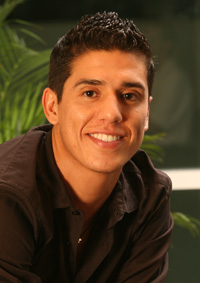
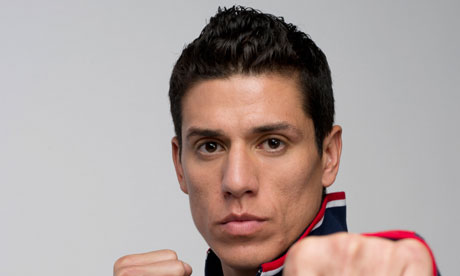







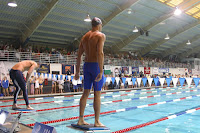
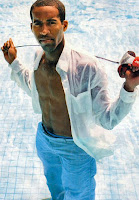
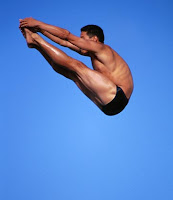

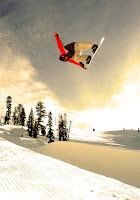


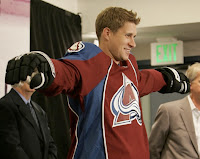
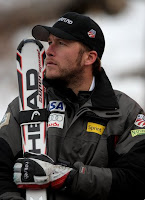
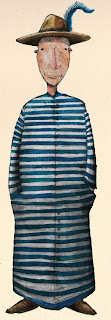

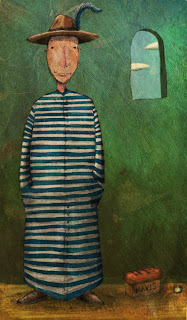
TLC, you did an awesome job here, featuring these Olympic performers! The only one I can add is Apolo Anton Ohno (who gets a nod in HOW TO HOOK A HOTTIE). Thanks for posting these!
Thanks T! And I didn't forget Apolo -- I figured since he'd been mentioned on the BuzzBlog before so I'd give some new guys the spotlight. =)
Who can resist guys with names like Wolf and Bode? OMG, yum. Thanks for the eye candy, TLC! :)
Seriously, this makes me wish I'd excelled in sports so I could hang with these guys!
Okay, here we go.. Athletes - totally my type.. Yummy!